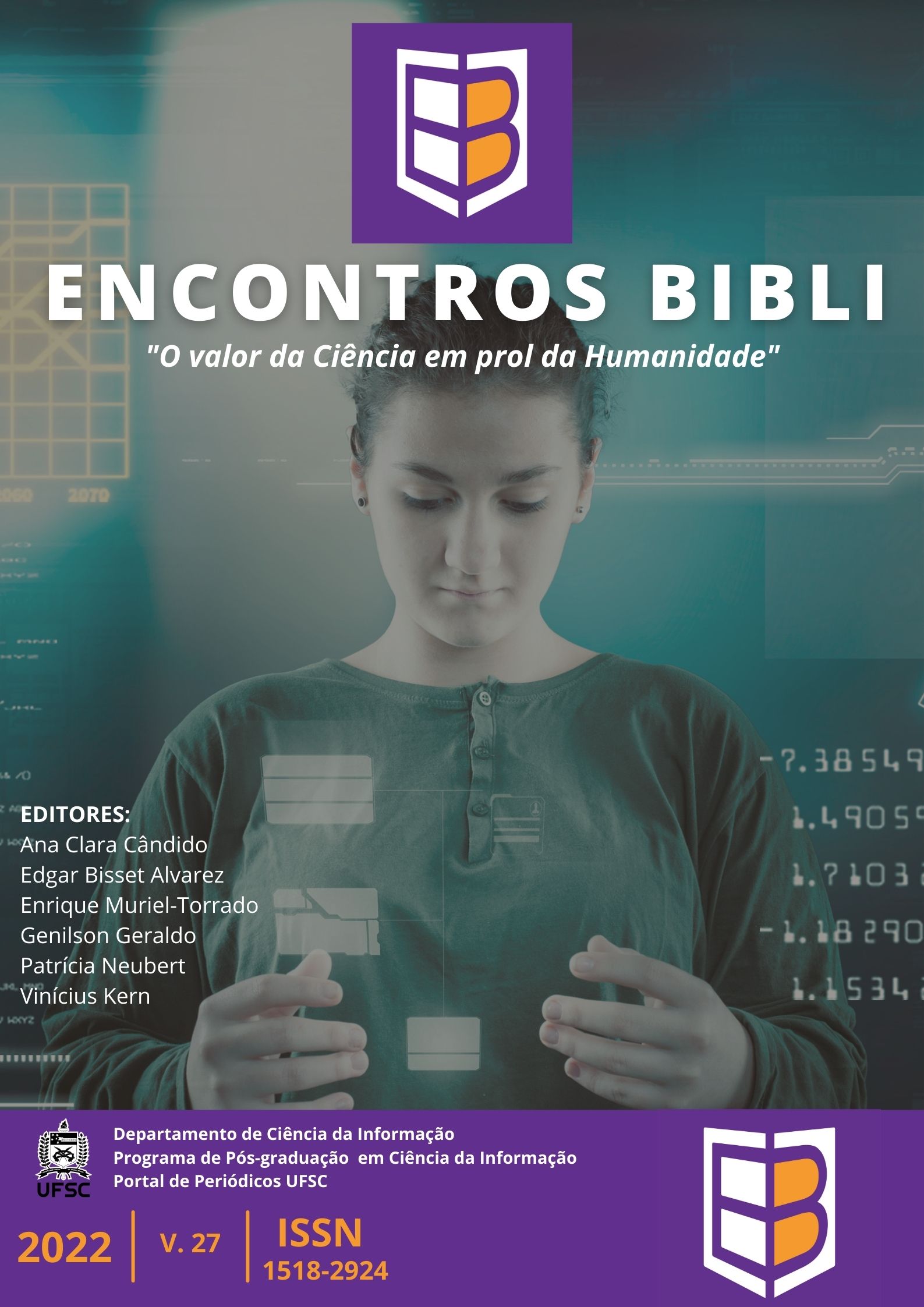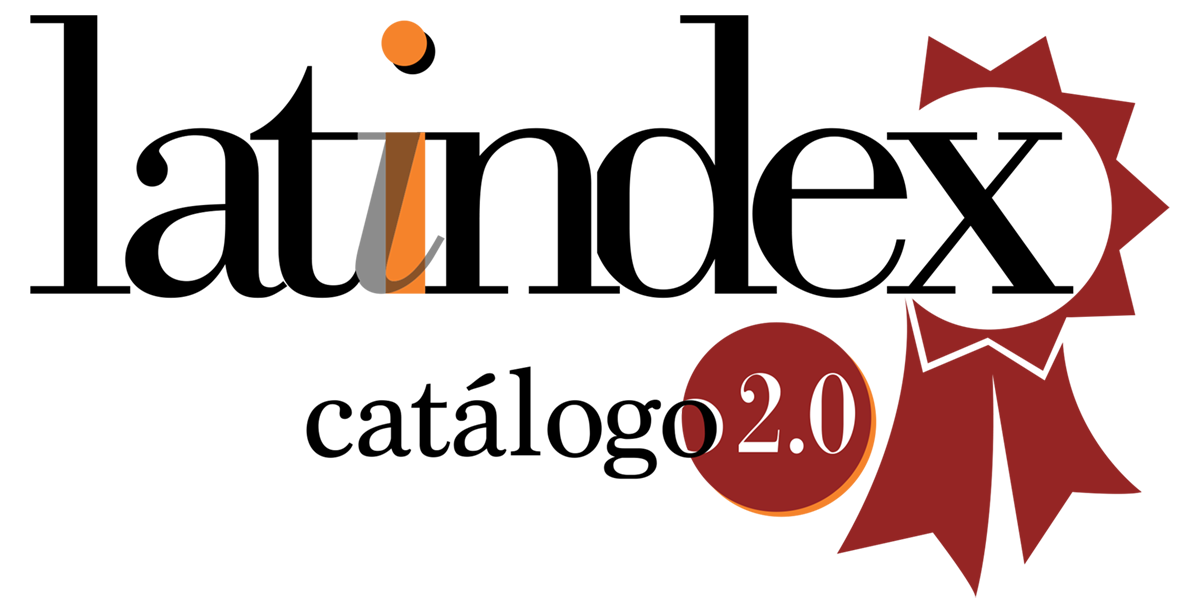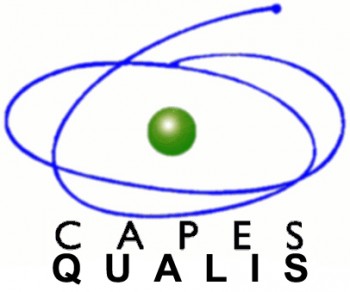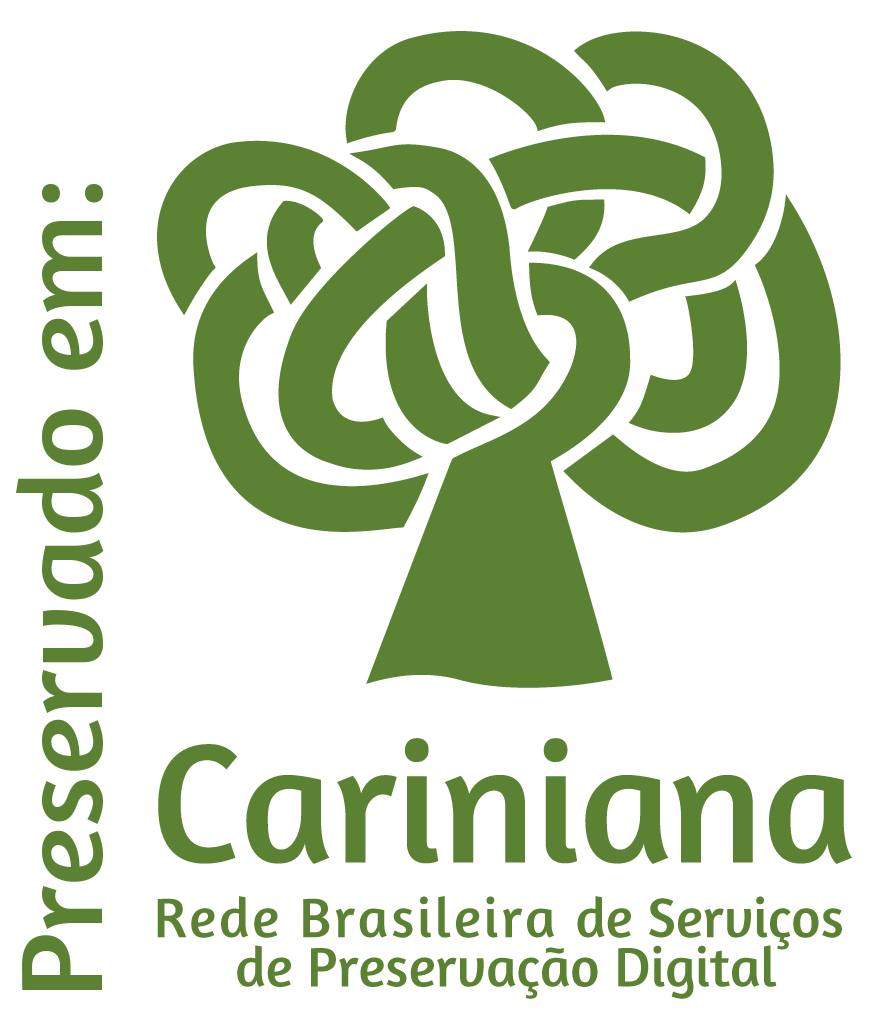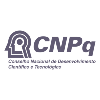An analysis of the tags used in the image indexing on Pixabay
DOI:
https://doi.org/10.5007/1518-2924.2022.e88171Keywords:
Image representation, Image indexing, Folksonomy, PixabayAbstract
Objective: Analyze a set of tags collected from images indexed in Pixabay through methods of images thematic representations used in the context of Information Science.
Methods: Descriptive and exploratory research, with a qualitative approach and use of documentary research to analyzing photographic documents in a digital environment. A case study was carried out on Pixabay, through the analysis of a sample of tags collected on the platform.
Results: We analyzed 320 tags, present in 14 images on Pixabay. It was possible to identify the relationship between the pre-iconographic and iconographic level with altruistic labeling, as they are levels that describe the primary and secondary content of images and are reliable to them, contributing to the generation of labels that are relevant in the information retrieval. The relationship between the pre-iconographic level and the expressive dimension was also identified, as it presented the type of image (photo, illustration, icon, symbol), colors and photographic elements (macro-image, shading), descriptive elements that represent the expressive dimension focused on the technique used in the production of the imagetic resource. Based on the analyzes carried out, potentialities and gaps in the use of folksonomy in the context of image indexing in digital environments were identified.
Conclusions: In the current Web context, with the growth of collaborative networks, Information Science must keep up with innovations and new forms of informational representation to improve its tools, techniques and research methods. Therefore, it is important to explore the potential of folksonomies in understanding collaborative informational phenomena.
Downloads
References
AREAL, Leonor. O que é uma imagem? Cadernos PAR, nº 5, maio 2012, p. 59-80. Disponível em: https://iconline.ipleiria.pt/bitstream/10400.8/566/1/art4.pdf. Acesso em: 2 dez. 2021.
BERNERS-LEE, Tim. The World Wide Web: a very short personal history. Maio 1998. Disponível em: http://www.w3.org/People/Berners-Lee/ShortHistory.html. Acesso em: 2 dez. 2021.
BRASIL. Senado Federal. Decreto Legislativo Nº 6, de 20 de março de 2020. Reconhece, para os fins do art. 65 da Lei Complementar nº 101, de 4 de maio de 2000, a ocorrência do estado de calamidade pública, nos termos da solicitação do Presidente da República encaminhada por meio da Mensagem nº 93, de 18 de março de 2020. Diário Oficial da União, Brasília, 20 de março de 2020. Disponível em: https://legis.senado.leg.br/norma/31993957/publicacao/31994188. Acesso em: 20 mar. 2022.
BROUGHTON, Vanda. The need for a faceted classification as the basis of all methods of information retrieval. Aslib proceedings, v. 58, n. 1-2, p. 49-72, 2006.
CAÑADA, Javier. Tipologías y estilos en el etiquetado social. Terremoto.net: Diseño de interacción desde el año 2000. 2006. Disponível em: http://web.archive.org/web/20111110154628/http://www.terremoto.net/tipologias-y-
estlos-en-el-etiquetado-social/. Acesso em: 10 jan. 2022.
CATARINO, Maria Elisabete; BAPTISTA, Ana Alice. Folksonomias: características das etiquetas na descrição de recursos da web. Informação & Informação, Londrina, v. 14, n. esp., p.46-67, 2009.
CHEN, Miao; LIU, Xiaozhong; QIN, Jian. Semantic relation extraction from socially-generated tags: a methodology for metadata generation. In: INTERNATIONAL CONFERENCE ON DUBLIN CORE AND METADATA APPLICATIONS, 8., 2008, Singapore. Proceedings […]. Singapore: Dublin Core Metadata Initiative, 2008. p. 117-127.
CORDEIRO, Rosa Inês de Novais. Análise e representação do conteúdo de imagens para o acesso à informação. In: FREITAS, Lídia Silva de; MARCONDES, Carlos Henrique; RODRIGUES, Ana Célia. (Org.). Documento: gênese e contextos de uso. Niterói: Editora da UFF, 2010. p. 235-246.
CORRÊA, Renato Fernandes; SANTOS, Raimunda Fernanda dos. Análise das definições de folksonomia: em busca de uma síntese. Perspectivas em Ciência da Informação, Belo Horizonte, v. 23, n. 2, p. 1-32, abr./jun. 2018.
FOUCAULT, Michel. As palavras e as coisas: uma arqueologia das ciências humanas. São Paulo: Martins Fontes, 1992.
GOMES, Amanda Garcia; RODRIGUES, Fernando de Assis; REDIGOLO, Franciele Marques; FUJITA, Mariângela Spotti Lopes. Análise de Tags na venda de frutas da Amazônia brasileira em rede social. Informação & Informação, Londrina, v. 26, n. 3, p. 499-525, jul./set. 2021. DOI: 10.5433/1981-8920.2021v26n3p499
GONÇALVES, José Luiz Costa Sousa; ASSIS, Juliana de. A indexação social enquanto prática de representação colaborativa da informação imagética: a construção da memória na plataforma Flickr. Revista Conhecimento em Ação, Rio de Janeiro, v. 1, n. 2, p. 51, 2016.
GUPTA, Manish; LI, Riu; YIN, Zhijun; HAN, Jiawei. An overview of social tagging and applications. In: AGGARWAL, Charu C. (Ed.). Social network data analytics. Boston: Springer, 2011. p. 447-497.
HJØRLAND, Birger. Cognitive views in knowledge organization (KO). 2007. Disponível em: https://arkiv.iva.ku.dk//kolifeboat/HISTORY%20&%20THEORY/cognitive_view_in_knowledge_orga.htm. Acesso em: 13 abr. 2022.
JOHNSON, Steven. Cultura da interface: como o computador transforma nossa maneira de criar e comunicar. Trad. Maria Luisa Borges. Rio de Janeiro: Jorge Zahar, 2001.
KIPP, Margaret E. I. Complementary or discrete contexts in online indexing: a comparison of user, creator and intermediary keywords. Canadian Journal of Information and Library Science, v. 30, n. 3, 2006.
KOSSOY, Boris. Fotografía e história. São Paulo: Ateliê, 2001.
LANCASTER, Frederic Wilfrid. Indexação e resumos: teoria e prática. Brasília: Briquet de Lemos Livros, 2004.
MACHADO, Arlindo. Máquina e imaginário: o desafio das poéticas tecnológicas. São Paulo: Edusp, 1993.
MANINI, Miriam Paula. Análise documentária de fotografias: leitura de imagens incluindo sua dimensão expressiva. Cenário arquivístico, Brasília, v. 3, n. 1, p. 16-28, 2004.
MANINI, Miriam Paula. Análise documentária de fotografias: um referencial de leitura de imagens fotográficas para fins documentários. 2002. Tese (Doutorado em Ciência da Informação e Documentação) - Escola de Comunicações e Artes, Universidade de São Paulo, São Paulo, 2002. Disponível em: http://www.teses.usp.br/teses/disponiveis/27/27143/tde-23032007-111516/. Acesso em: 10 jan. 2022.
MASSONI, Luis Fernando Herbert; FLORES, Andressa Bones. A cidade representada em tags: explorando a folksonomia no flickr. PontodeAcesso, Salvador, v. 11, n. 3, p. 133-147, 2017.
MELLO FILHO, Luiz Lourenço de; ARAÚJO JÚNIOR, Rogério Henrique de. Objetos de fronteira: um diálogo entre a Ciência da Informação e a Ciência de dados. Encontros Bibli: Revista Eletrônica de Biblioteconomia e Ciência da Informação, Florianópolis, v. 26, p. 1-22, 2021. DOI: https://doi.org/10.5007/1518-2924.2021.e77247
NEVES, Barbara Coelho; SANTANA, Ramon Davi; GOMES, Dulcinéia Vieira de Assunção; REIS, Makson de Jesus. Se estou no Google, logo existo: técnicas de alavancagem e visibilidade de um periódico científico em motores de busca por meio de técnicas de SEO. Informação & Informação, Londrina, v. 25, n. 4, p. 402-430, out./dez. 2020.
NÓBREGA, Isabella de Oliveira; MANINI, Miriam Paula. # Impeachment ou# naovaitergolpe: uma análise sobre a folksonomia na indexação de imagens fotográficas em redes sociais da web 2.0. Biblionline, João Pessoa, v. 12, n. 4, p. 73-84, 2016.
OLIVEIRA, Jéssica Pereira de; PINHO, Fabio Assis. Análise da folksonomia em grupos colaborativos do Passei Direto. LOGEION: Filosofia da Informação, Rio de Janeiro, v. 7, n. 2, p. 165-185, 2021.
ORGANIZAÇÃO PAN-AMERICANA DA SAÚDE. Histórico da pandemia de COVID-19. Disponível em: https://www.paho.org/pt/covid19/historico-da-pandemia-covid-19#:~:text=Em%2031%20de%20dezembro%20de,identificada%20antes%20em%20seres%20humanos. Acesso em: 20 mar. 2022.
PANKE, Stefanie; GAISER, Birgit. With My Head Up in the Clouds'': using social tagging to organize knowledge. Journal of Business and Technical Communication, v. 23, n. 3, p. 318 349, 2009. Disponível em: https://journals.sagepub.com/doipdf/10.1177/1050651909333275. Acesso em: 10 jan. 2022.
PANOFSKY, Erwin. Significado nas artes visuais. 3. ed. São Paulo: Perspectiva,
PATO, Paulo Roberto Gomes. Imagens: polissemia versus indexação e recuperação da informação. 2015. 340 f. Tese (Doutorado em Ciência da Informação) - Universidade de Brasília, Brasília, 2015.
PETERS, Isabella; STOCK, Wolfgang G. Folksonomy and information retrieval. Proceedings of the American Society for Information Science and Technology, [S. l.], v. 44, n. 1, p. 1-28, 2007.
RAMALHO, Rogério Aparecido Sá; OUCHI, Marcos Teruo. Tecnologias Semânticas: Novas Perspectivas para a Representação de Recursos Informacionais. Informação & Informação, Londrina, v. 16, n. 3, p. 60-75, dez. 2011. Disponível em: https://www.uel.br/revistas/uel/index.php/informacao/article/view/9829. Acesso em: 13 maio 2022. DOI: http://dx.doi.org/10.5433/1981-8920.2011v16n3p60.
ROBREDO, Jaime. Documentação de hoje e de amanhã: uma abordagem revisitada e contemporânea da Ciência da Informação e de suas aplicações biblioteconômicas, documentárias, arquivistas e museológica. 4. ed. Rev. amp. Brasília, DF: Edição de autor, 2005. 409 p.
RODRIGUES, Ricardo Crisafulli. Análise e tematização da imagem fotográfica. Ciência da Informação, Brasília, v. 36, n. 3, p. 67-76, 2007.
SANDY, Heather Lea Moulaison. Social tagging in the Web 2.0 environment: author vs. User tagging. Journal of Library Metadata, v. 8, n. 2, p. 101-115, 2008.
SANTOS, Thais Helen do Nascimento. A taxonomia e a folksonomia na representação da informação de fotografias. Perspectivas em Ciência da Informação, Belo Horizonte, v. 23, n. 1, p. 89-103, jan./mar. 2018.
SANTOS, Raimunda Fernanda dos. Indexação de xilogravuras em versos: a representação entre o real e o imaginário coletivo. 2019. Tese (Doutorado em Ciência da Informação) – Universidade Federal da Paraíba, João Pessoa, 2019.
SANTOS, Raimunda Fernanda dos; ALBUQUERQUE, Maria Elizabeth Baltar Carneiro de. Indexação de xilogravuras à luz da semântica discursiva e das potencialidades da folksonomia. João Pessoa: Ed. UFPB, 2020. 425 p.
SANTOS, Raimunda Fernanda dos; CORRÊA, Renato Fernandes. Análise das definições de Folksonomia: em busca de uma síntese. Perspectivas em Ciência da Informação, Belo Horizonte, v. 23, n.2, p. 1- 32, 2018.
SCHROEDER, Kimberly A. Layered indexing of images. The indexer, v. 21, n. 1, p. 11-14, 1998.
SHATFORD, Sara. Analyzing the subject of a picture: a theoretical approach. Cataloging & Classification Quarterly, Chicago, v. 6, n. 3, p. 39-62, 1986.
SMIT, Johanna Wilhelmina. A representação da imagem. Informare, Rio de Janeiro, v. 2, n. 2, p. 28-36, 1996.
VANDER WAL, Thomas. Folksonomy definition and wikipedia. 2005. Disponível em: http://www.vanderwal.net/random/entrysel.php?blog=1750. Acesso em: 15 jan. 2022.
Published
How to Cite
Issue
Section
License
Copyright (c) 2022 Federico Natalio Madkur, Raíssa Yuri Hamanaka, Raimunda Fernanda dos Santos, Rogério Aparecido Sá Ramalho

This work is licensed under a Creative Commons Attribution 4.0 International License.
The author must guarantee that:
- there is full consensus among all the coauthors in approving the final version of the document and its submission for publication.
- the work is original, and when the work and/or words from other people were used, they were properly acknowledged.
Plagiarism in all of its forms constitutes an unethical publication behavior and is unacceptable. Encontros Bibli has the right to use software or any other method of plagiarism detection.
All manuscripts submitted to Encontros Bibli go through plagiarism and self-plagiarism identification. Plagiarism identified during the evaluation process will result in the filing of the submission. In case plagiarism is identified in a manuscript published in the journal, the Editor-in-Chief will conduct a preliminary investigation and, if necessary, will make a retraction.
This journal, following the recommendations of the Open Source movement, provides full open access to its content. By doing this, the authors keep all of their rights allowing Encontros Bibli to publish and make its articles available to the whole community.
Encontros Bibli content is licensed under a Creative Commons Attribution 4.0 International License.
Any user has the right to:
- Share - copy, download, print or redistribute the material in any medium or format.
- Adapt - remix, transform and build upon the material for any purpose, even commercially.
According to the following terms:
- Attribution - You must give appropriate credit, provide a link to the license, and indicate if changes were made. You may do so in any reasonable manner, but not in any way that suggests the licensor endorses you or your use.
- No additional restrictions - You may not apply legal terms or technological measures that legally restrict others from doing anything that the license permits.

